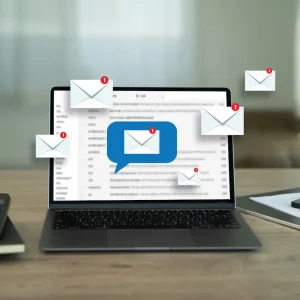Look on our website and you’ll see there’s quite a few mentions of telematics.
While the systems have become more and more commonplace over the last few years, there’s still scepticism in some quarters about the services telematics companies offer.
But what exactly is telematics, and what are the pros and cons of using the systems?
According to the Oxford dictionary, telematics is “the branch of information technology which deals with the long-distance transmission of computerised information”.
In other words, telematics sends data from your car to a central hub to be analysed, either by a fleet manager or a member of staff who works for a telematics company.
BusinessCar has spoken to three leading telematics experts to dispel myths and outline the advantages the systems can bring to your fleet.
PRO – Telematics can save fleets money on fuel
According to Nick Walker, managing director of RAC Telematics – highly commended in the 2016 BusinessCar Techies – his customers “are making savings of between 10% and 15% a year across their fleet fuel costs” thanks to the benefits of being able to travel from A to B in the most efficient manner as drivers drive more carefully with the systems installed.
Meanwhile, Peter Millichap, marketing manager at Teletrac Navman, says one of its clients, Cosmo Ceramics, saves up to five gallons of fuel per vehicle per week, amounting to savings of £10,000 a year.
CON – Staff may have concerns about privacy
One of the biggest detractions of telematics is that – in theory – your fleet manager can see where you are at any given time, even outside of working hours and a fear that drivers may be ‘named and shamed’ for bad driving.
However, Beverley Wise, director, UK & Ireland, of 2016 BusinessCar Techies-winning company TomTom Telematics, said these concerns can be overcome “by outlining the potential benefits it can achieve through improved driving performance, improved safety and reduced cost, which will aid stability in the long-term”.

RAC Telematics has also developed a Bluetooth fob which enables the driver to switch to a ‘private mode’ when they’re not driving for business, as some may not to be tracked while driving privately.
PRO – Points mean prizes!
A number of companies offer incentives whereby they reward the best, safest and most fuel-efficient drivers with prizes including cash bonuses, shopping vouchers and memorable days out.
TomTom’s Wise said the ‘gamification’ – whereby game-design elements, such as point-scoring, is used in non-gaming contexts to boost user engagement levels – can help fleets reduce overall costs, but warned that drivers need to be given appropriate support to improve performance in forms such as driver training days or briefings.
Some companies also offer other incentives, such as allowing the best drivers to take their pick of the company vehicles first, while others use league tables as a way of incentivising drivers to compete against each other.
CON – Systems can take time to install
Installing a telematics box can take anywhere between 15 minutes and a day according to the three answers we received.
All three agreed that specialists should install the equipment on your behalf too, as the process may involve dismantling and rebuilding the dashboard.

They also warned that if the telematics box is not fitted properly, it could interfere with other electrical equipment in the vehicle.
Writing in his BusinessCar blog, Walker said installing a telematics system yourself is “almost like investing in a new computer network for your office, only to attach the hard drives to the monitors with sticky tape and hope for the best”.
PRO – Telematics reduces the number of accidents
According to TomTom’s Wise, its client, electrical service provider Blackbourne, saw a 66% reduction in the number of accidents its fleet was involved in after six of months of having a telematics policy thanks to an analysis of performance scores and providing additional driver training where necessary.
This reduction in accidents came alongside an 88% decrease in speeding fines and an 8% reduction in miles covered per day.

Another of TomTom’s clients, Breyer Group, achieved a £60,000 reduction in insurance premiums after using the telematics systems to help it hit three reduction targets: frequency of accidents, accident severity and the number of claims.
Meanwhile, Walker said his own fleet has seen a 25% reduction in accidents, with businesses seeing lower premiums as a result.
CON – Telematics takes up more time
Some fleet managers are stressed and short of time and claim that analysing data takes up valuable resources.
However, all three companies argue analysing telematics information can save managers time in the long run.
TomTom says drivers can verify the nature of each trip, which assists in the creation of mileage logs with minimal input from fleet managers on a journey-by-journey basis. This, the company says, saves drivers and managers time as they do not need to go back and work out which journeys were completed for business purposes as the information is automatically inputted into the system.
Teletrac Navman’s Millichap agrees, saying that telematics “gets rid of time-consuming paperwork” thanks to it keeping data all in one place.
PRO – Telematics integrates well with third-parties
TomTom’s telematics system is able to integrate with a number of third-party apps, offering solutions to help specific industries.
For example, its Webfleet system can integrate with various third-party vehicle-checking apps, which, each morning, allow drivers to conduct vehicle safety checks with the information, such as whether or not the lights are working, uploaded to managers automatically.
According to TomTom, the telematics box will notify managers if these checks have not been completed. If faults are detected, these will also be flagged up to the fleet boss, to help ensure unsafe vehicles are tended to.
“Often, these processes are paper-based, leaving them open to potential inaccuracies and creating a paperwork burden for drivers and the office,” Wise said.

Another example of TomTom’s third-party integration is Webfleet for Sales Cloud, which integrates with the Salesforce customer relationship management system to allow, according to TomTom, functions such as automatic trip reporting, simplified appointment management and in-depth sales reporting.
Furthermore, the Webfleet system also allows driver coaching and improvement through Optidrive 360, a system that monitors driver behaviour and reports on speeding, harsh braking or sudden direction changes, idling and real-time and average fuel consumption. It also advisises drivers on, for example, the optimum speed based on fuel efficiency and speed limit, when to change gear and when to release the accelerator.
Managers get access to a dashboard that highlights trends in individual behaviour via colour-coded charts, as well as in-depth reports for deeper levels of analysis.
PRO – Managers know exactly where drivers are and if vehicles have faults
With real-time location services, fleet bosses are able see exactly where cars are, which offers several advantages – if a delivery company needs to squeeze in an extra pick-up, they can see the closest vehicle to the new destination, for instance.
It can also safeguard reputations – if someone reports a company driver for erratic driving, for example, it can be quickly be seen whether or not a vehicle was in the vicinity of the location.
Location tracking services can also help with route management, providing short and traffic-free directions.
Additionally, some systems now send notifications to managers every time a warning light appears on the dashboard of a car, allowing them to react quickly and reduce vehicle downtime, thus saving the business money in the long run – the RAC estimates when a vehicle is off the road it can cost businesses around £500 a day in lost revenue.
Read more:
Crash-for-cash con artists sent to jail after telematics data curtails operation
Techies 2016: Telematics – TomTom Telematics Webfleet
Telematics take-up doubles in last year
BusinessCar Awards 2016: Telematics – RAC Business Solutions





